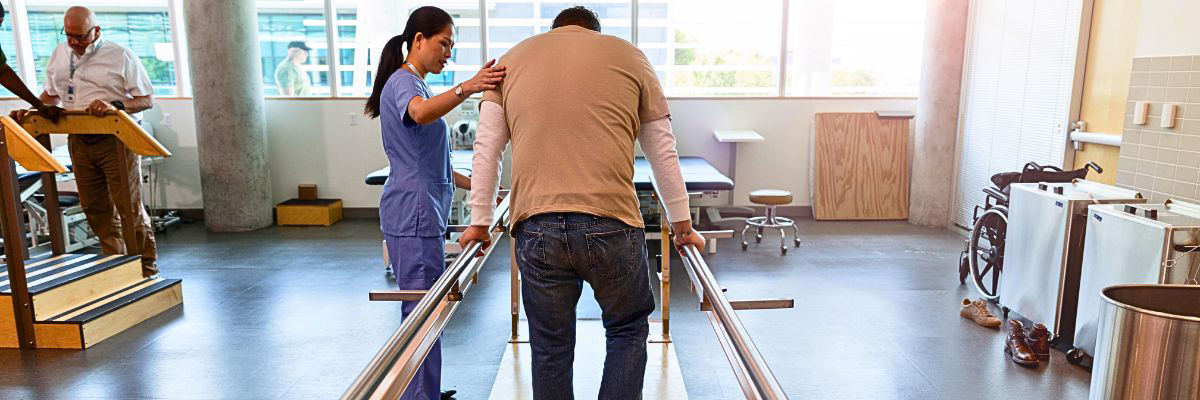Will I walk again after a spinal cord injury?
When faced with a spinal cord injury, one of the most pressing concerns is whether the ability to walk will be regained. The prognosis varies greatly depending on the severity and type of injury, with significant progress often occurring within the first month post-injury serving as a strong predictor of future abilities. Here, we explore the possibilities of walking again after a spinal cord injury, focusing on rehabilitation, statistical outcomes in Canada, and the potential legal recourse for ensuring access to necessary treatments.
Types of Spinal Cord Injuries
Spinal cord injuries (SCI) are broadly categorized into two types: complete and incomplete injuries.
- Complete Injuries: These result in a total lack of movement and sensation below the injury level. They often lead to more extensive damage and can cause conditions such as fecal incontinence.
- Incomplete Injuries: These allow some degree of signal transmission between the brain and areas below the injury, resulting in limited movement and sensation. Incomplete injuries generally do not cause incontinence.
Statistical Outlook in Canada
According to Canadian statistics, approximately one-third of individuals with spinal cord injuries will regain the ability to walk. However, even for those who do not fully recover this ability, most experience some degree of improvement. The Canadian Paraplegic Association reports that around 86,000 Canadians live with spinal cord injuries, with nearly half of these cases resulting from traumatic events such as motor vehicle accidents, falls, and sports injuries.
Early Signs and Predictive Factors
The first month following a spinal cord injury is crucial. The progress made during this period is a strong indicator of future outcomes. For instance:
- Neck Injuries: Improvement in shoulder and upper arm movement might be observed if the injury is located in the cervical region of the spine.
- Thoracic and Lumbar Injuries: Improvements may include some trunk control and, in rare cases, partial leg movement.
Patients should monitor their strength and sensation closely during this time and report any loss immediately to their healthcare provider, as no further deterioration should occur once initial recovery has stabilized.

Rehabilitation: A Path to Recovery
Rehabilitation plays a pivotal role in the recovery process for spinal cord injury patients. Here is an outline of the typical rehabilitation journey post-surgery:
- Initial Trauma Phase:
- Stabilization: Immediate medical attention focuses on stabilizing the injury and preventing further damage.
- Surgery: If necessary, surgery is performed to relieve pressure on the spinal cord or to stabilize the spine.
- Early Rehabilitation:
- In-Hospital Rehabilitation Unit: Patients transition to a specialized rehabilitation unit where intensive therapies begin.
- Physical Therapy: Focuses on strengthening muscles, improving mobility, and teaching techniques to compensate for lost function.
- Occupational Therapy: Helps patients relearn daily activities and regain independence.
- Out-Patient Rehabilitation:
- Continued Therapy: Patients often continue their rehabilitation on an out-patient basis, allowing for ongoing progress and adaptation.
- Advanced Therapies: May include aquatic therapy, electrical stimulation, and advanced mobility training.
- Long-Term Adaptation:
- Assistive Devices: Utilization of wheelchairs, walkers, and other devices to enhance mobility.
- Community Integration: Support for returning to work, school, and recreational activities.
A Positive Story of Hope
Legal Considerations for Funding Rehabilitation
The cost of spinal cord injury rehabilitation is substantial. In Canada, the lifetime cost for an individual with a spinal cord injury can range from $1.25 million to $3 million. Given these high expenses, securing appropriate funding is crucial. Victims of accidents resulting in spinal cord injuries may need to pursue legal action to ensure they receive the compensation necessary for their extensive medical and rehabilitation needs. A successful lawsuit can cover costs such as:
- Medical Bills: Immediate and ongoing medical expenses related to the injury.
- Rehabilitation Costs: Intensive in-patient and out-patient therapy sessions.
- Assistive Devices: Wheelchairs, home modifications, and other adaptive equipment.
- Lost Wages: Compensation for lost income due to inability to work.
Regaining the ability to walk after a spinal cord injury is a complex and individualized journey. While approximately one-third of patients in Canada will walk again, many others will still see significant improvements. Early intervention, intensive rehabilitation, and a strong support system are crucial components of recovery. Additionally, legal action may be necessary to secure the financial resources needed for comprehensive care. If you or a loved one has suffered a spinal cord injury, understanding your rights and options is essential for navigating this challenging path toward recovery.
Helping Injured Clients
For over 35 years, CLG Injury Lawyers have helped thousands of injured clients. We fight for your rights to receive the maximum compensation you deserve. Providing you the Peace of Mind to focus on your Road to Recovery. Our experienced personal injury lawyers offer a free, no obligation case evaluation.
For more articles and safety tips, go to https://clginjurylaw.ca/blog/ or subscribe to our newsletter.







